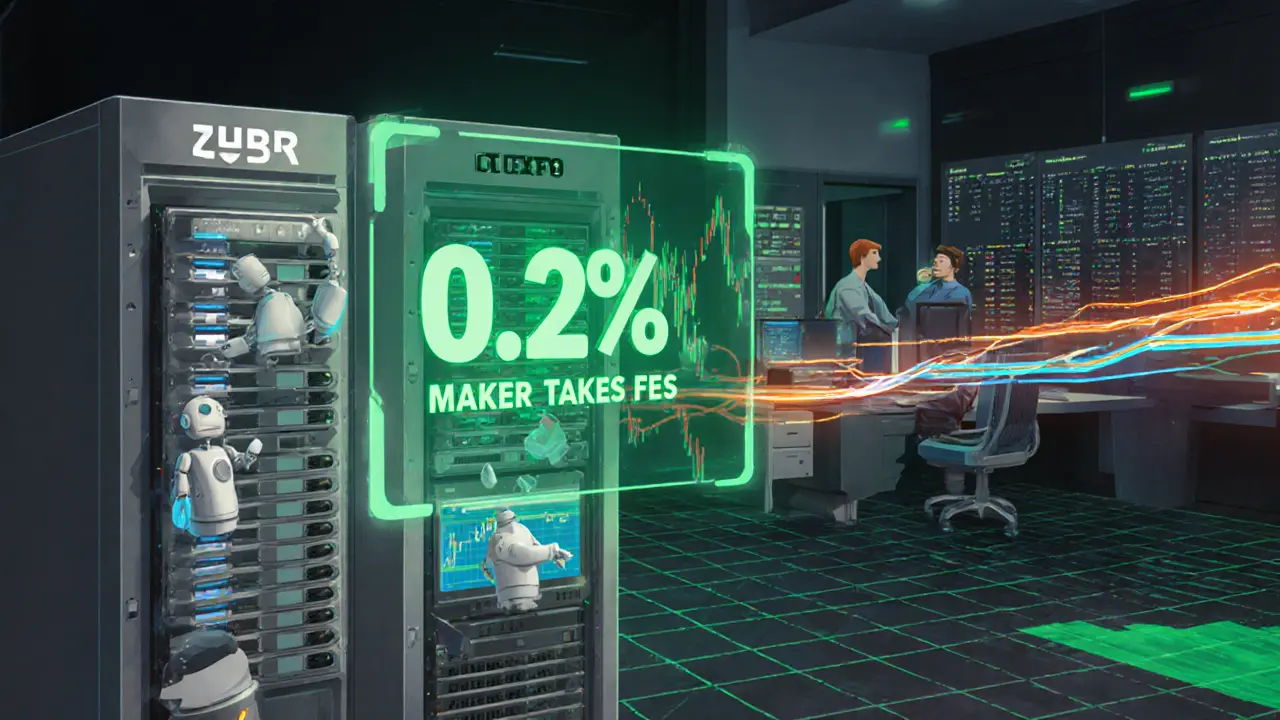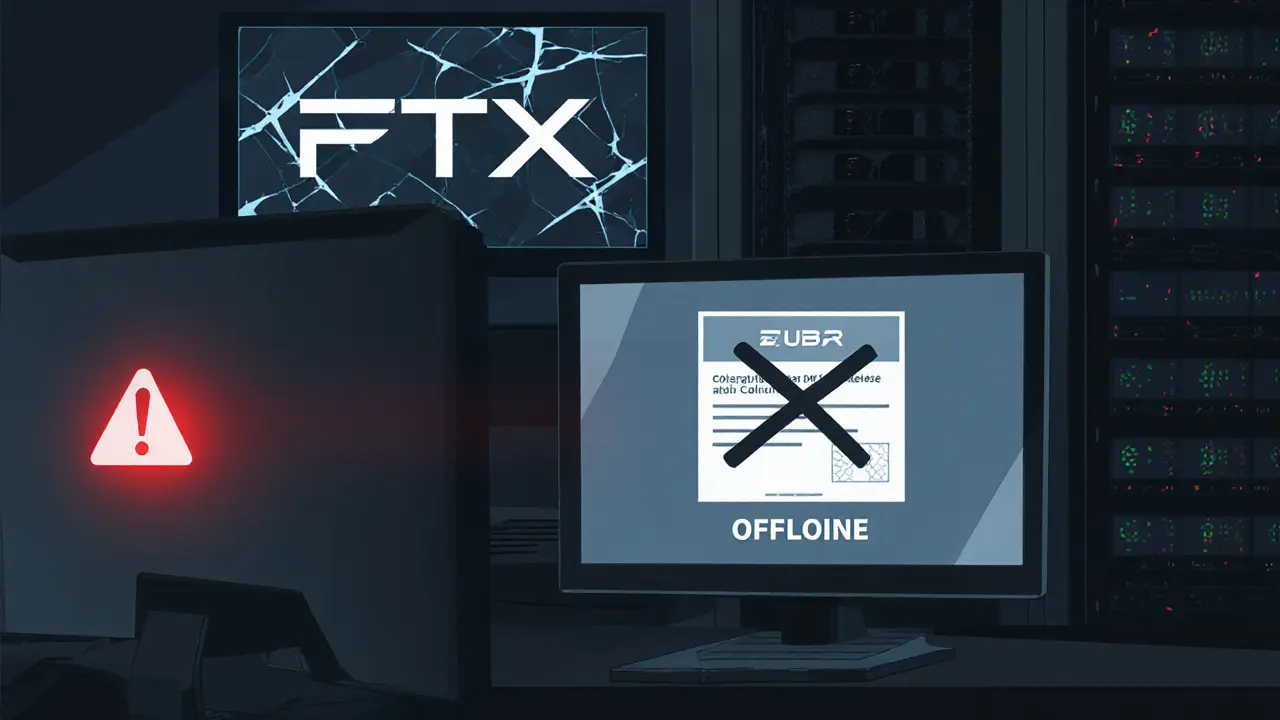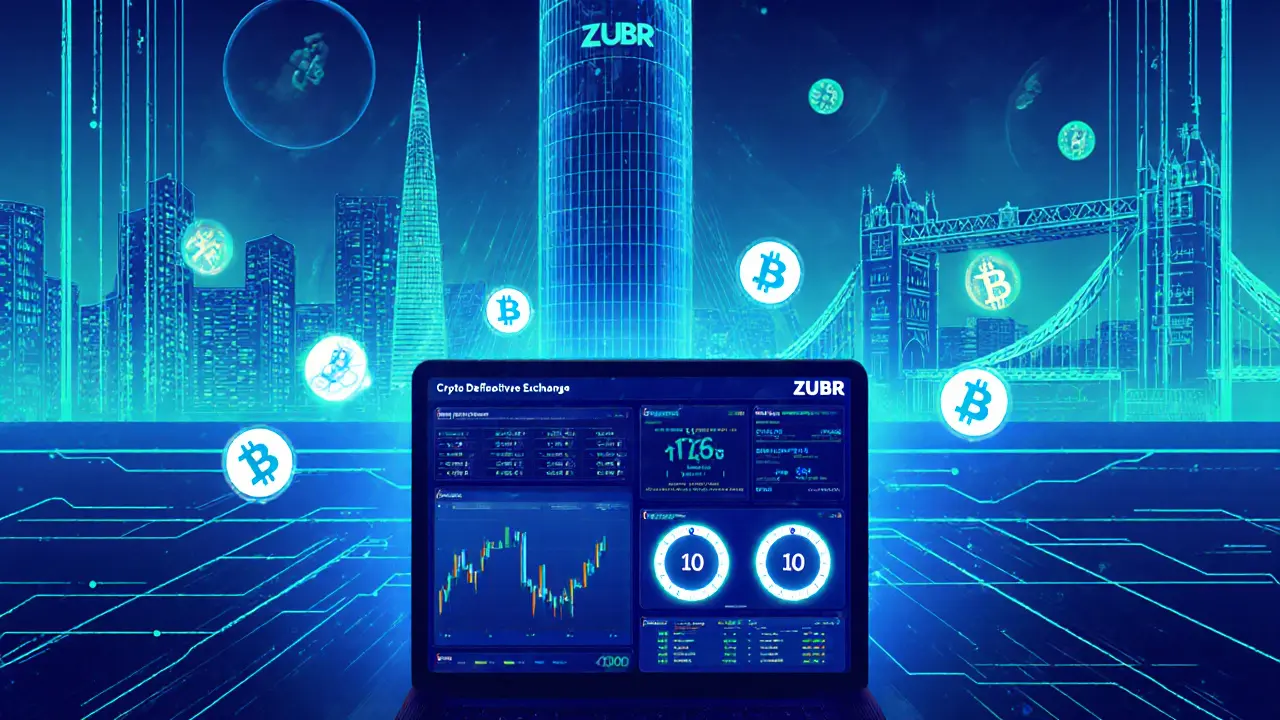ZUBR Trading Fee Calculator
Calculate your trading fees based on ZUBR's historical fee structure (0.02% maker, 0.05% taker).
Looking for a straight‑forward take on ZUBR? This ZUBR review cuts through the hype, lays out what the platform actually offers, and tells you where it stands today after the FTX fallout.
What is ZUBR Crypto Derivatives Exchange?
ZUBR Crypto Derivatives Exchange is a high‑performance trading venue that specializes in perpetual contracts on cryptocurrencies. Launched with the claim of delivering institutional‑grade infrastructure to retail traders, ZUBR positioned itself as a transparent alternative to the opaque, unregulated futures platforms that dominated the market in 2020.
Core Features and Trading Tools
At its peak, ZUBR offered leverage up to 20x on a range of crypto pairs, with execution times measured in microseconds. The exchange built a colocation hub in London, letting traders connect via low‑latency fiber links or direct market data feeds.
Beyond raw speed, ZUBR provided algorithmic‑trading‑as‑a‑service (ATaaS). This meant you could spin up a virtual private server, install your own bots, and access the same risk engine used by larger institutions - all without paying the hefty fees that traditional prop desks charge.
Fee Structure
According to the platform’s public pricing sheet, ZUBR charged the lowest taker and maker fees among its peers. Maker fees were a flat 0.02% and taker fees sat at 0.05%, with no hidden "pre‑trade" costs. While the exact numbers could shift with market conditions, the promise of a flat‑rate model made the exchange attractive for high‑volume traders who hate tier‑based pricing.
Regulatory Footprint and Licensing
When ZUBR went live, it pursued a European licence and later secured a Distributed Ledger Technology (DLT) Provider License in Gibraltar under the umbrella of "ZUBR an FTX Company". This licence, issued by the Gibraltar Financial Services Commission, is designed for firms that provide blockchain‑based services and requires robust AML/KYC compliance.
FTX Trading Limited completed the acquisition of ZUBR in 2021, re‑branding the platform and leveraging the FTX brand to attract institutional capital. Unfortunately, the collapse of FTX in November 2022 left ZUBR’s licensing status in limbo, and no public statement has confirmed whether the Gibraltar DLT licence remains active.
Quality Assurance - Exactpro Testing
One of ZUBR’s strongest credibility points was its independent testing by Exactpro, a UK‑based firm that validates high‑frequency trading systems. Exactpro performed both functional and non‑functional tests, simulating millions of orders per second to prove that ZUBR’s matching engine could handle peak market stress without latency spikes.
The successful test made ZUBR the first live digital derivatives platform approved by Exactpro, a seal that most competitors never pursued.

Data Transparency - Nomics A+ Verification
In November 2020, ZUBR earned an A+ Verified Exchange badge from Nomics. The certification required full order‑book snapshots, historical trade data, and API reliability that meet institutional standards. At the time, only a handful of exchanges - Deribit, IDEX, Switcheo, and Blocktrade - shared this status.
Compliance and AML/KYC
According to Crystal’s database (March 2020), ZUBR’s wallets were flagged as “Trusted Exchange”, indicating that the platform implemented AML and KYC checks aligned with the Financial Action Task Force (FATF) recommendations and the EU’s 5th Anti‑Money‑Laundering Directive (AMLD5). This compliance framework distinguishes ZUBR from many unregulated derivatives venues that operate without any customer verification.
Research and Market Insights
ZUBR ran a research blog (blog.zubr.io) that published analytics on price discovery, blockchain‑based supply‑demand signals, and volatility forecasting. A February 2021 post demonstrated how monitoring Bitcoin balances on exchanges and Tether inflows could give early warnings of price swings. Access to real‑time blockchain analytics was offered as a standard feature for all traders, an uncommon perk at the time.
Pros and Cons - A Quick Verdict
- Pros: microsecond execution, low flat‑rate fees, institutional‑grade testing, A+ data verification, robust AML/KYC, access to blockchain analytics.
- Cons: limited public information on post‑FTX status, unclear licensing continuity, scarce user‑review data, no official volume updates beyond the initial $25 M.

How Does ZUBR Stack Up Against the Competition?
| Exchange | Max Leverage | Fee (Maker / Taker) | Licensing | Independent Testing |
|---|---|---|---|---|
| ZUBR | 20x | 0.02% / 0.05% | Gibraltar DLT (as of 2021) | Exactpro (full functional & non‑functional) |
| Deribit | 100x | 0.00% / 0.025% | Estonia VASP | Internal audit, no public third‑party report |
| Binance Futures | 125x | 0.01% / 0.04% | Malta & Seychelles licenses | Internal stress tests only |
| Bybit | 100x | 0.025% / 0.075% | Vanuatu & Cayman licences | Third‑party security audit (no performance test) |
The table shows ZUBR’s advantage in testing rigor and fee transparency, though it lags behind rivals on maximum leverage. For traders who value execution speed and regulatory oversight over ultra‑high leverage, ZUBR remains a compelling choice.
Current Operational Status
After the FTX bankruptcy, ZUBR’s website went offline and no official statements were released. The Gibraltar DLT licence is listed as "inactive" in the public register as of early 2023, suggesting that the exchange either ceased operations or is undergoing a restructuring process. Since no new data feeds or API endpoints are reachable, prospective users should treat ZUBR as effectively dormant until a formal re‑launch announcement appears.
Bottom Line - Should You Consider ZUBR?
If you need a platform that offers microsecond latency, flat‑rate fees, and the comfort of third‑party testing, ZUBR’s historical record is impressive. However, the uncertainty surrounding its post‑FTX life cycle makes it a risky bet for anyone looking for a reliable, long‑term venue. For now, keep an eye on official Gibraltar filings or a potential re‑brand before allocating capital.
Frequently Asked Questions
Is ZUBR still operating in 2025?
Public information indicates that ZUBR’s website is offline and its Gibraltar DLT licence is listed as inactive. Until an official re‑launch notice is posted, the exchange should be considered inactive.
What was the fee structure on ZUBR?
ZUBR charged a flat 0.02% maker fee and 0.05% taker fee, with no tiered discounts based on volume.
Did ZUBR have any regulatory licenses?
Yes. After its acquisition by FTX, ZUBR obtained a Distributed Ledger Technology (DLT) Provider License from the Gibraltar Financial Services Commission.
How did ZUBR ensure its platform performance?
The exchange was independently tested by Exactpro, which ran both functional and non‑functional stress tests to verify microsecond execution and order‑matching reliability.
What kind of data did ZUBR provide to traders?
ZUBR offered real‑time blockchain analytics, order‑book snapshots, and historical trade data, enabling the Nomics A+ verification.


5 Responses
Microsecond latency isn’t just a buzzword – it actually lets you shave off slippage on every trade 😎.
When you’re running a bot that fires dozens of orders per second, those fractions add up fast.
Combine that speed with flat‑rate fees and you get a recipe for consistent profitability, especially if you’re scaling volume.
Just keep an eye on the licensing chatter; a solid regulatory backdrop makes the whole setup less risky.
ZUBR’s fee structure is really straightforward: 0.02% maker and 0.05% taker.
No tiered discounts means you always know what you’ll pay.
If you value low fees and fast execution, that part of the platform still looks solid.
One must ponder, with analytical rigor, the ontological implications of a trading venue that claims “institution‑grade” infrastructure whilst existing in the liminal space between regulatory opacity and technological transparency; indeed, the very notion of “institutional‑grade” becomes a linguistic construct that demands deconstruction.
Moreover, the reliance on third‑party validation such as Exactpro serves not merely as a badge but as a semiotic signifier of epistemic legitimacy within the cryptographic derivatives ontology.
Oh great, another exchange that bragged about microseconds and then vanished like a ghost after the FTX fallout.
If you enjoy chasing shadows, ZUBR might be your perfect haunted house.
The historical performance of ZUBR cannot be divorced from the broader narrative of crypto derivatives regulation.
First, the Gibraltar DLT licence, while innovative, sits on a regulatory framework that is still evolving, which introduces an element of legal uncertainty for participants.
Second, the Exactpro testing regime demonstrated that the matching engine could sustain millions of orders per second without degradation, a technical achievement few competitors can claim.
Third, the flat‑rate fee model, set at 0.02% maker and 0.05% taker, removes the opaque tiered structures that often penalize high‑volume traders.
Fourth, the provision of real‑time blockchain analytics gave traders a transparent view of on‑chain flows, enhancing market insight beyond standard order‑book data.
Fifth, the platform’s ATaaS offering lowered the barrier for algorithmic traders to deploy sophisticated strategies without the overhead of building their own infrastructure.
Sixth, the partnership with Nomics for A+ verification reinforced data integrity, an essential factor for institutional participation.
Seventh, the post‑FTX silence raises legitimate concerns about the continuity of operational support and custodial safeguards.
Eighth, the apparent inactivity of the website suggests that the exchange may have ceased trading operations, at least in the public domain.
Ninth, without a clear roadmap or communication from the former owners, prospective users are left to speculate about the likelihood of a revival.
Tenth, the competitive landscape now features rivals like Deribit and Binance Futures that offer higher leverage and broader liquidity pools, potentially diminishing ZUBR’s market share.
Eleventh, the absence of updated volume metrics makes it difficult to assess current liquidity depth, an important consideration for large traders.
Twelfth, the Gibraltarian regulator’s public register listing the licence as inactive further corroborates the operational limbo.
Thirteenth, investors seeking a stable venue should weigh these uncertainties against the technical merits that ZUBR once showcased.
Fourteenth, a prudent approach would involve monitoring official filings and any announcements of a re‑branding effort before allocating capital.
Fifteenth, until such signals emerge, treating ZUBR as a dormant platform is the safest stance.
Sixteenth, in summary, ZUBR’s past accolades are impressive, but its future remains an open question that warrants cautious observation.